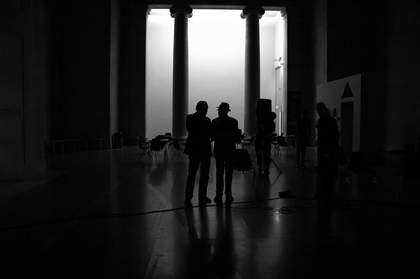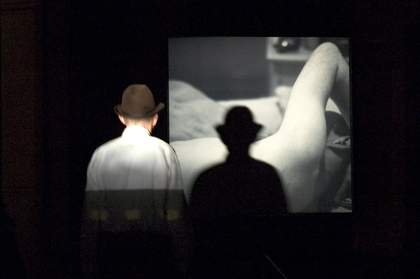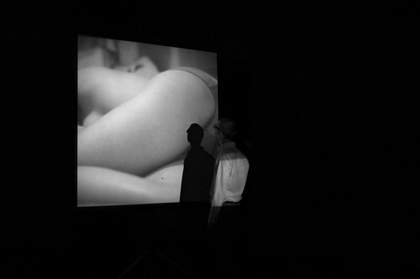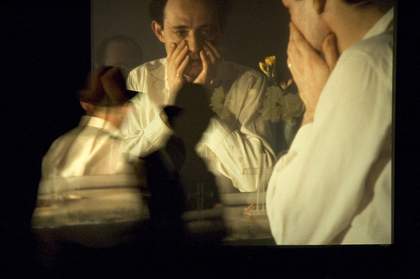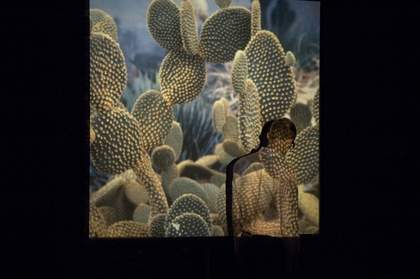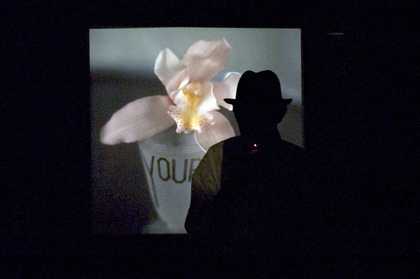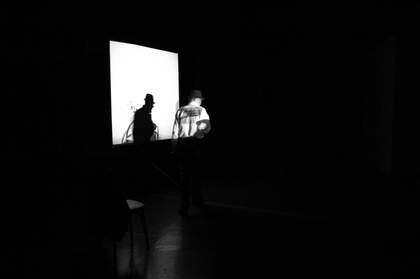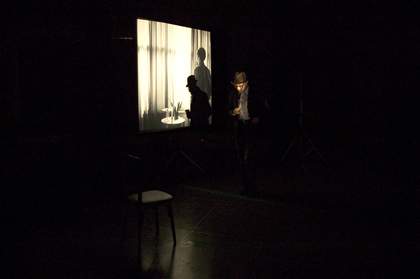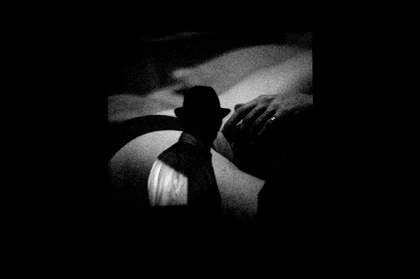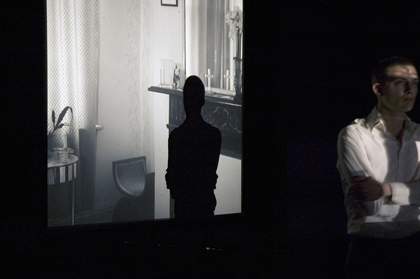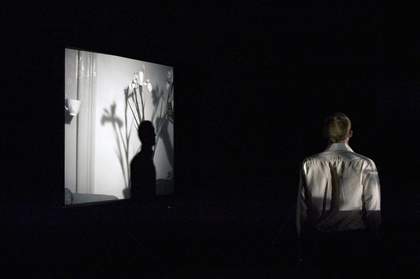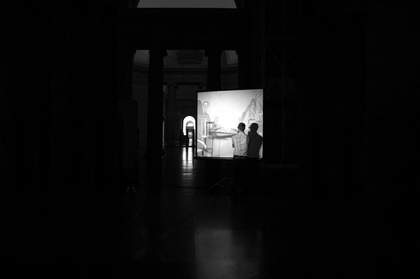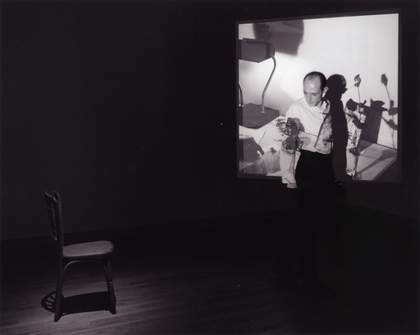Partial Eclipse (Tate T12453), an early performance work by French artist Marc Camille Chaimowicz, has had a long relationship with Tate. First performed at Tate Britain (then Tate Gallery), in the Duveen Galleries, in 1981 as part of Artists and Performance, the work has since been re-performed twice at Tate Britain: first in 2006 for the Tate Triennial, and again in 2011 for an event called Has the Film Already Started? While Tate had purchased performance works before, the time between creation, purchase and presentation had tended to be minimal (see, for example, Tino Sehgal’s This is propaganda, created in 2002, purchased 2005, and Roman Ondák’s Good Feelings in Good Times, created 2003, purchased 2005). By contrast, Chaimowicz had first performed Partial Eclipse in 1980, at the De Appel Gallery, in Amsterdam, leading to a twenty-seven year gap between the conception of the work and its eventual acquisition by Tate in 2007. Chaimowicz did not originally intend for the work to be re-performed indefinitely; after a performance in 1982, Partial Eclipse was not performed again publically until 2002, when artist Lucy McKenzie requested it was performed for her ‘Flourish Night’ event in Glasgow. It was at this point, that Partial Eclipse became a repeatable work.
Chaimowicz took on the role of the central performer during the 1980s iterations, restating the semi-autobiographical images he chose to use in the accompanying projections. Although he did perform occasionally after 2000, including at Tate, he also opened up the solo performer position to others at this point. As well as acquiring the performance and the collection of slides and audio tracks necessary to stage it, Tate also possesses detailed specification, from Chaimowicz, as to the nature of that performer.1 Having established that the performer should be in his thirties, the document goes into specifics of height – ‘aprox [sic] 1 metre 75 tall’ – as well as hair colour and other facial features – ‘He should not be wearing spectacles (but can be wearing contact lenses)’. The detailed description, which Tate’s Archive dates to around 2004, a number of years before the work was acquired by Tate, demonstrates Chaimowicz’s aspiration to present a performance which adheres as closely as possible to his ‘original’ intention, even after a lapse of thirty years. There is an implication within this that although Chaimowicz has embraced the repeatability of the performance, demonstrated by the creation of this set of instructions, he does not automatically accept that it could be changed; each iteration, although spatially and temporally different, has common elements which should not be compromised.
The work itself centres on the movements of the single performer, who is instructed to walk at an even pace, while still conveying physical tension, in a circular or figure of eight pattern around the space and behind the screen used for the slide projections. While he moves, he also smokes a cigarette and instructions dictate the smoke should be caught in the light of the projector, to create a ‘filmic’ quality.2 Chaimowicz also specifies that the performer should wear a jacket, which is removed within the opening minutes of the performance, in order that his light coloured shirt (also specified) can act as a secondary screen for the slide projection, incorporating his body into the images shown. Performer and projection are thus integrated. While images of interiors of a house, partially naked figures, static people, windows, flowers and animals were projected onto the screen and performer, music by Brian Eno and Kraftwerk began and ended the performance, and a voiceover, which alternated between a male and female voice, traced the movements of the performer. The narration presented segments of monologues, which, in the post-2000 re-enactments, were also displayed in text form in cases around the performance space.3 Chaimowicz encouraged the display of documents related to earlier iterations of the work, in order to tie the work to the notion of the event, even when it was presented in what he referred to as the ‘mute’ mode, without any of the live aspects. Tate holds photographic documentation of all but one previous enactment of the work, and maintains a chronology of the works presentations, signalling an awareness of the significance of the work’s repetition.4
Overall, Chaimowicz’s performance, although not originally intended for re-enactment, has come to adapt to repeatability. Rather than altering the central content – the singular pacing performer, the slide projections, the music and narrative voiceover – he has instead adapted who should perform the work, and how it can be presented. As well as establishing a clear set of rules and instructions for the re-enactment of the piece, down to the specific details of the performer’s appearance, Chaimowicz has also established how the documents and ephemera from previous iterations can be incorporated into the wider presentation of the artwork, through their inclusion in vitrines around the performance space. While he aspires to keep the core content of the artwork intact, Chaimowicz openly acknowledges the performance’s journey through history since 1980, and its potential to continue long into the future. It is a performance which is at once both fixed in its essentials and continuously unfolding.
Acatia Finbow
August 2016

